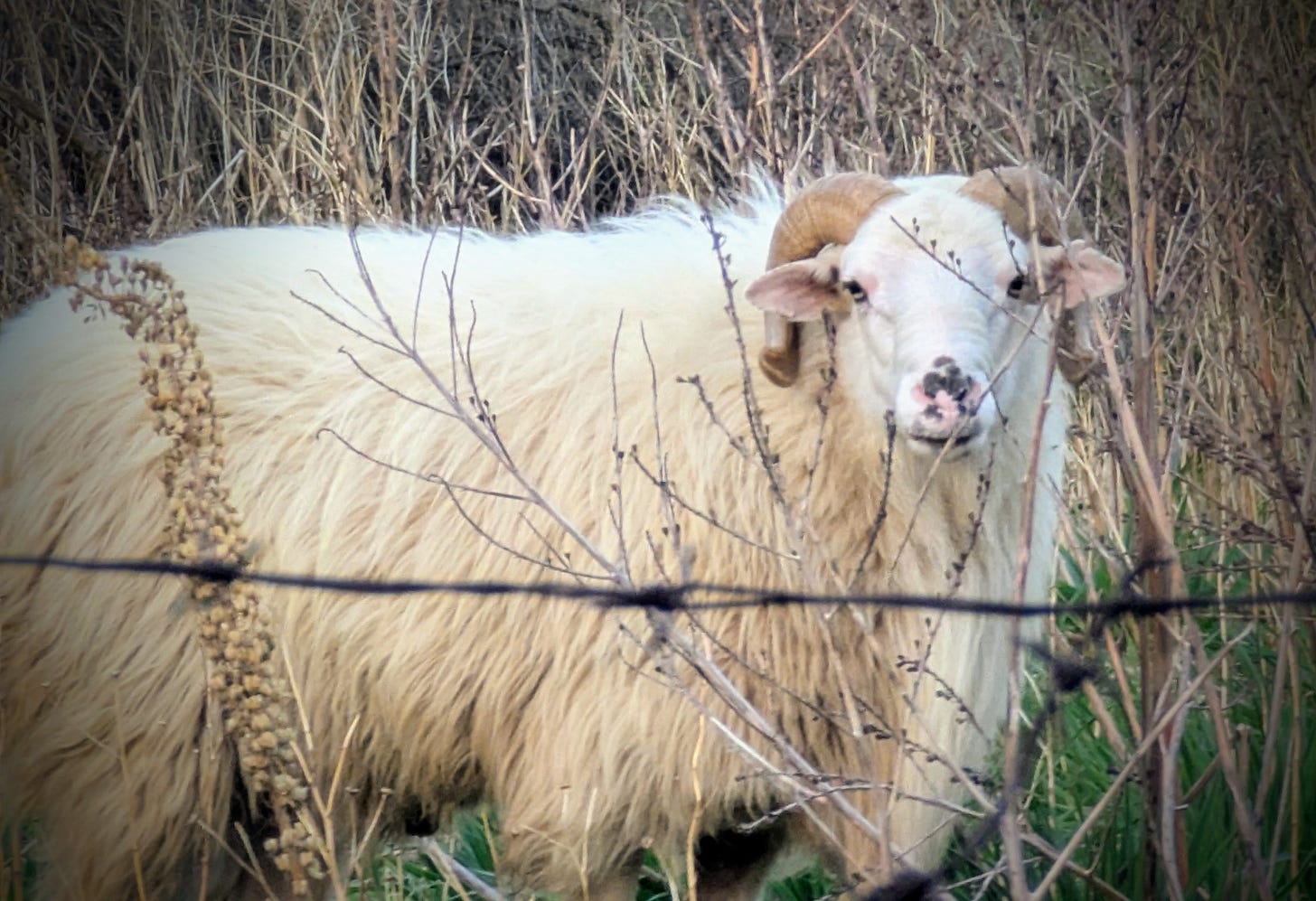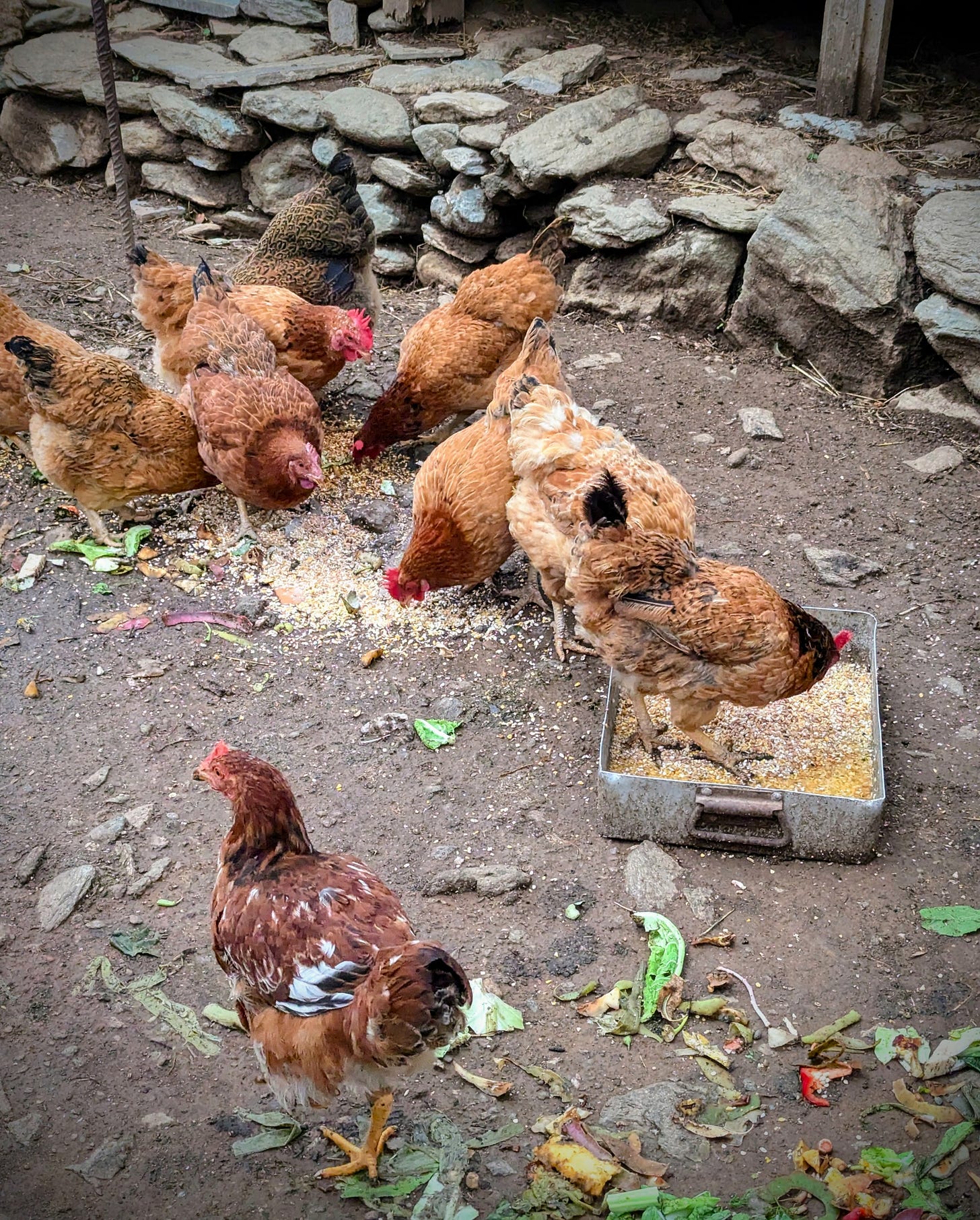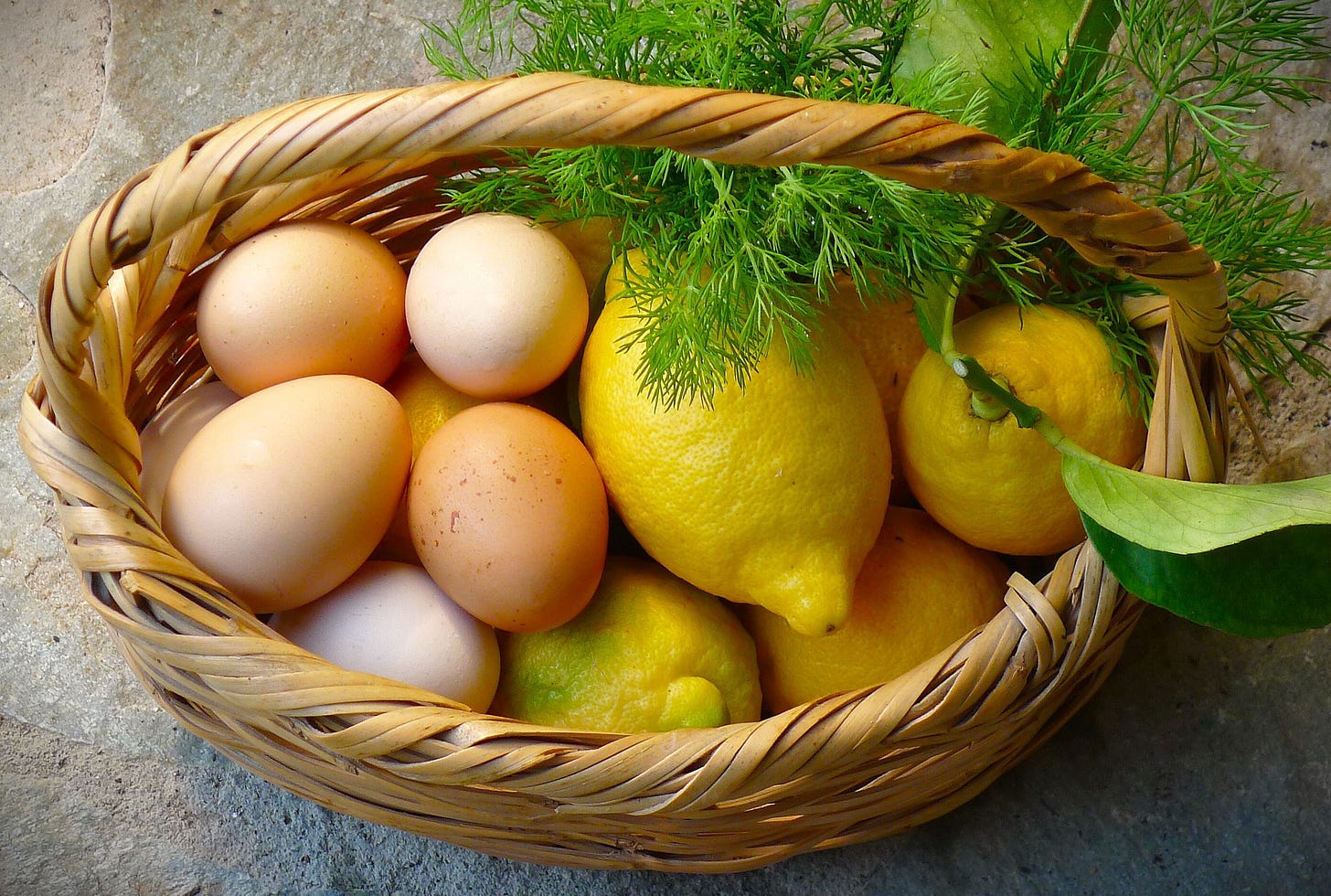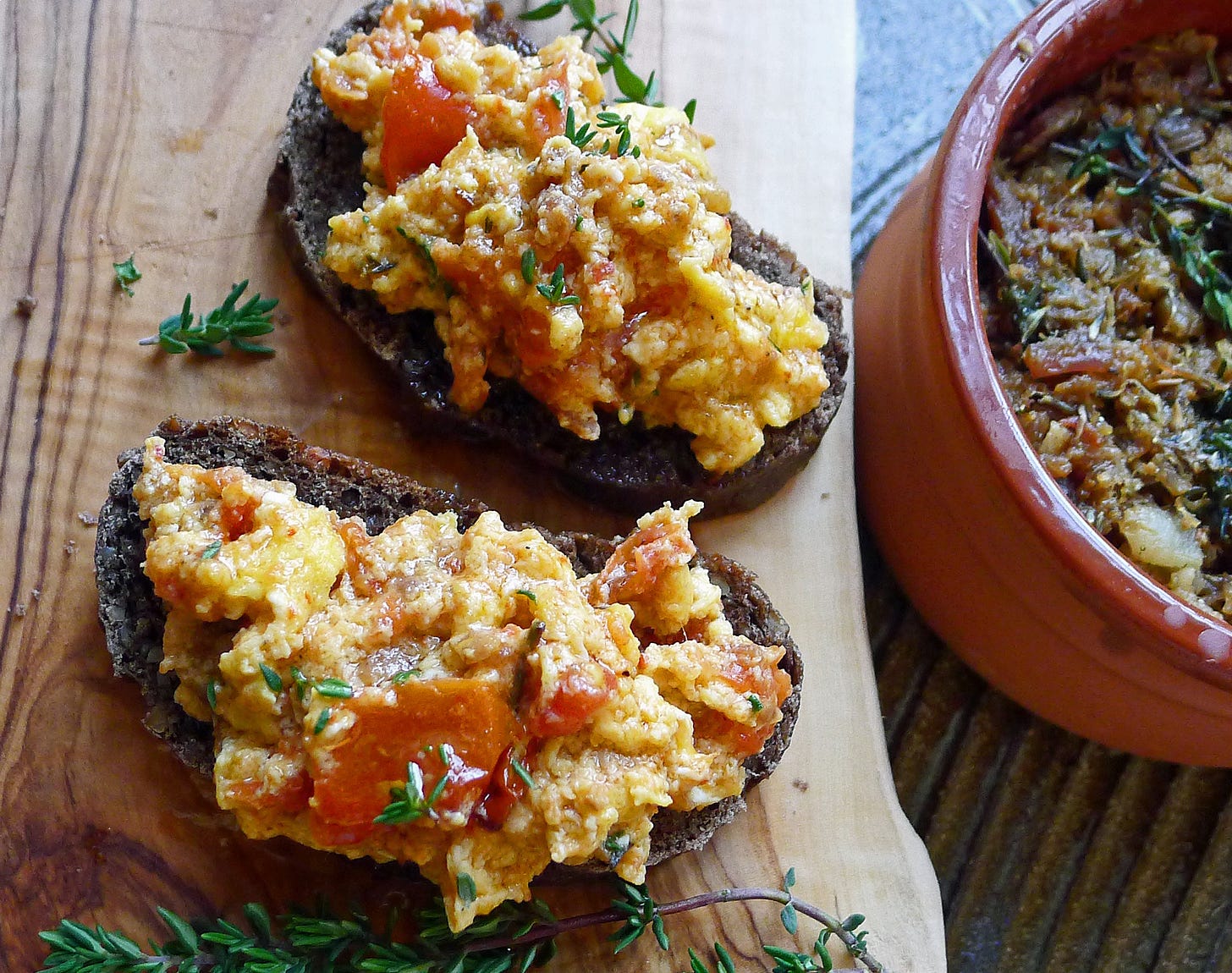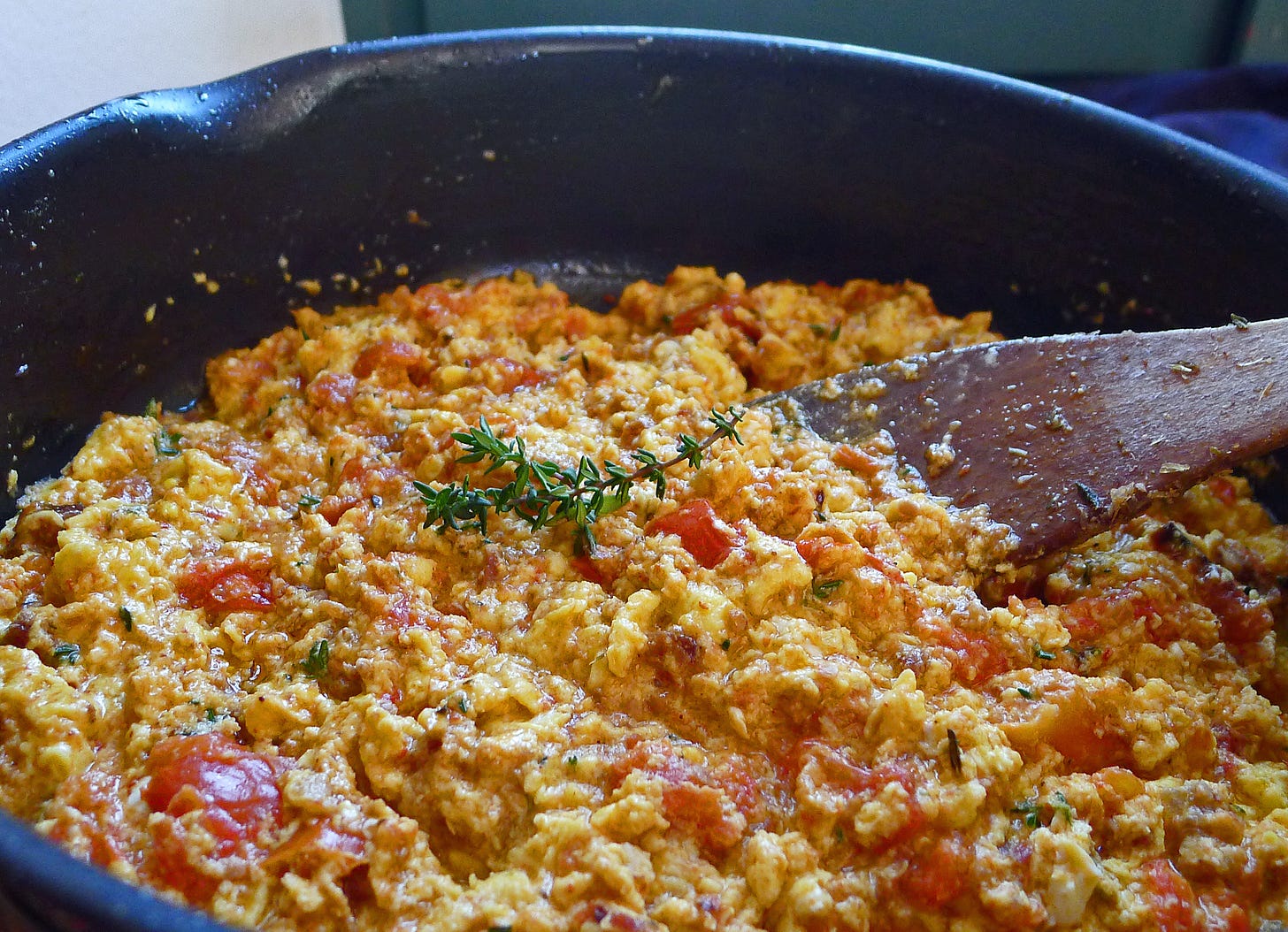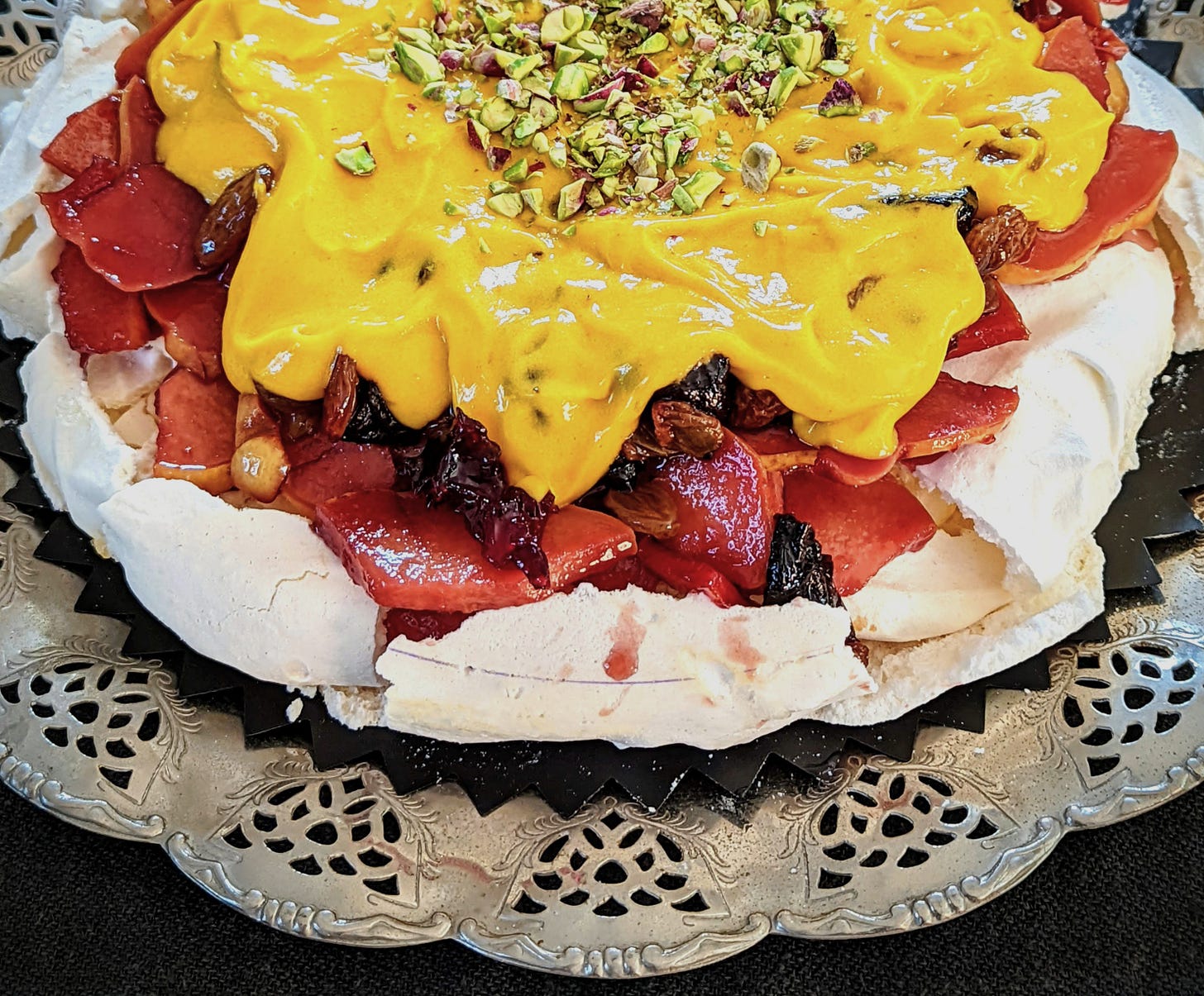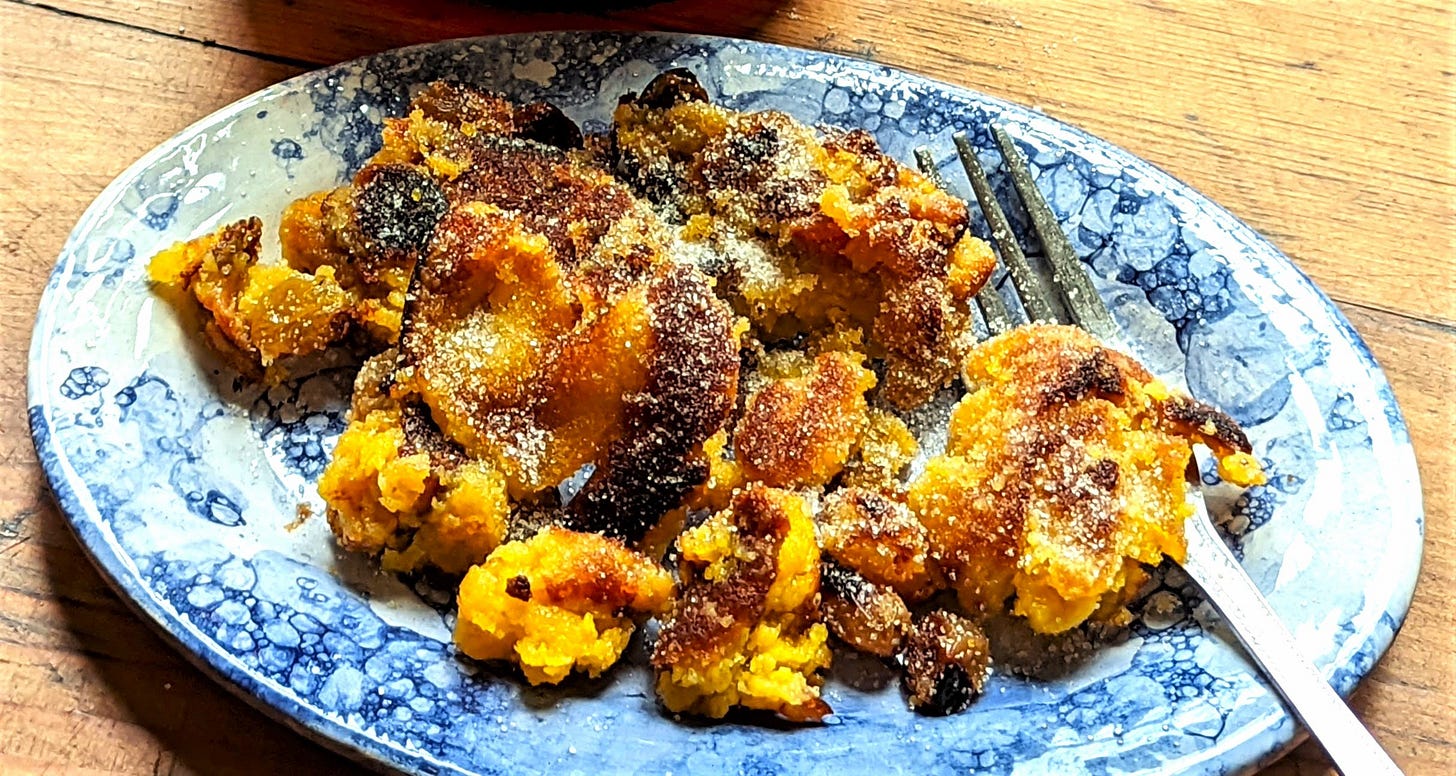Hens, Eggs, and a Ram
As most islanders left for Athens and the festive city, we spent the holidays taking care of our neighbors' hens, collecting lots of eggs and experimenting with recipes, not always successfully...
This lovely ram is gravely observing me every morning, as I let the hens out of the coop and feed them.
It is the time of year Ela and Stathi, our next-door neighbors and dear friends, drive to Këlcyrë in Albania to spend the holidays with their family.
We have divided the work, and Costas goes in the evening to collect and wash the eggs before he brings them to the kitchen and lock the birds in. We have to be particularely vigilant as we are surrounded by martens, our kind of hungry ferret. They inhabit most of the islands in the Mediterraneanand wander at night leaving their marks allover our veranda, occasionnaly screaming as they mate. They eat accorns, almonds, and whatever fruit they find but especially like to kill the hens and drink their blood.
So we are again flooded with eggs, along with some lovely lemons from Ela’s overflowing trees that are in much better condition than ours.
Every night Costas brings from the coop at least five and often seven wonderful eggs, so after a few days we have far too many. We give some to our friend the farmacist, but most other Kéans have their own hens. Thus our refrigerator is filled with an abundant lot!
We enjoy eggs fried in olive oil, add them to pilafs and risottos, scramble them with whatever vegetable or green we have at hand, and occasionally we make paspala, the traditional winter delicacy of Kéa.
The rustic pork confit women prepare with leftover scraps of pork and fat, after the traditional slaughtering and butchering of the family pig, was in the old days stored in clay jars to be used much like Maggi cubes –a common European food flavoring– throughout the year.
The pork-flavored scrambled eggs, also called ‘paspalas,’ are cooked with bits of pork confit and tomatoes to become one of the most well-loved delicacies of Kéa! Once I made it at Zaytinya, and Bonnie Benwick wrote about it and published the recipe at the Washington Post.
Too strong for sweets
Looking for sweets that use more than 2-3 eggs, I came across the winter version of Pavlova with Zabaglione Creme, at Saveur.
With six eggs needed, almost one day’s crop –the whites for the meringue, and the yolks for the sweet, wine-flavored cream, the recipe seemed ideal.
We decided to make it with poached quince and raisins, instead of the pineapple, which is not our favorite fruit. The zabaglione crème came out vividly yellow, since the yolks of these wonderful eggs are deep orange, but its taste instead of been better than usual, it was far too eggy…
We splashed the fruit with plenty of Grand Marnier to compensate, but still, the flavor of the zabaglione was far too strong, something we had not expected.
We were more satisfied with the next sweet we made; a very unusual Austrian mushed-up pancake called Kaiserschmarrn. We happened to see it served in a documentary about Vienna cafés and looked for the recipe, which we followed. It was simple enough, and we decided to double the number of liqueur-soaked raisins –used Grand Marnier again— instead of the rum the recipe asks for. We hardly ever make pancakes, but this was a very simple endeavor, and the sweet came out wonderful, if not too photogenic…
The moral of the story, we think, is that the very fresh, delicious eggs from hens that roam around the fields in the winter are best eaten in savory dishes!

